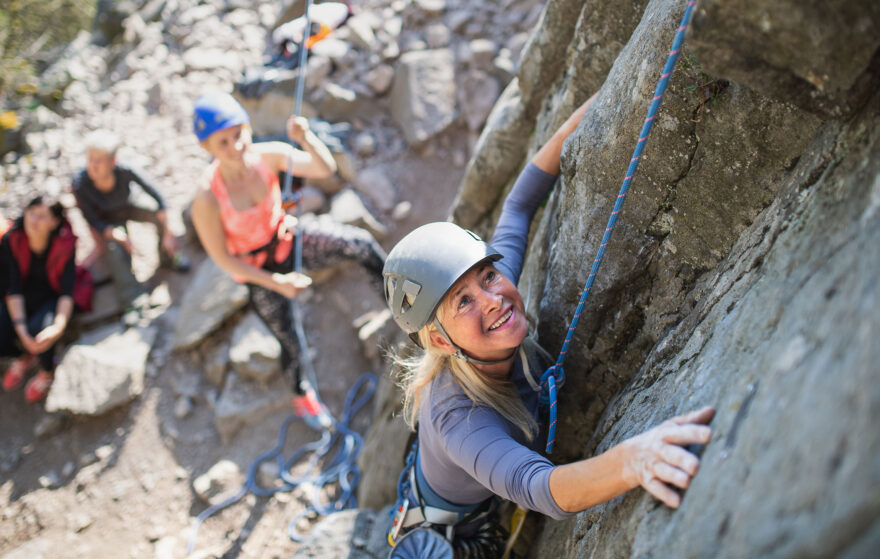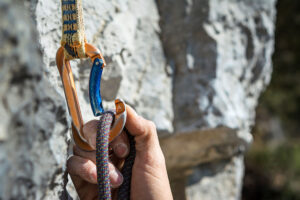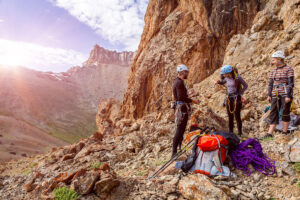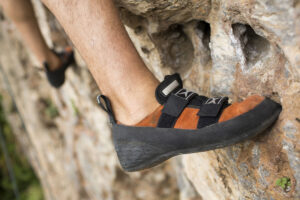
Image by Ground Picture, Shutterstock
Rock climbing — a mix of physical strength, mental toughness, and problem-solving — offers an exhilarating adventure for beginners eager to challenge themselves. But with the array of technical gear, ropes, and an entirely new vocabulary of climbing terms, the information can quickly become overwhelming.
As an indoor climbing instructor with seven years of experience, I’ve guided countless individuals through their first ascents. Here are my top tips for efficient movement on the wall:
1. Straighten Your Arms
New climbers tend to lock off their elbows to hold their upper body close to the wall. This action is understandable, as many people get nervous as they climb higher off the ground and want to cling to the wall for a sense of security. Unfortunately, this very action that makes new climbers feel secure temporarily, will actually make them fall sooner!
Locking off your elbows puts a lot of strain on your bicep and tires out the muscle quickly. By climbing with straight arms when possible, you can conserve your strength for the next big move and climb more efficiently.

Image by ueuaphoto, Shutterstock
2. Don’t Over-Grip
Along the same vain as the previous tip, people also tend to over-grip the holds on the wall. By hanging on tight, new climbers tire out their hands and are not able stay off the ground as long. The goal is to hold on as tight as necessary, but no tighter to conserve hand strength.
3. Don’t Climb Like You Are On a Ladder
Before trying rock climbing, most people have not climbed many objects outside of ladders or trees. Because of this, new climbers are used to tackling climbing straight-on. What do I mean by that? Ladders are climbed with your chest forward and your body position stays that way for the entire ascent. Rock climbing is very different. It can be more efficient to move your body side to side or put your hip into the wall to get your weight over one foot.
Whichever move makes sense will depend on where the holds are on the wall and the incline angle of the wall itself. Check out this article from climbing.com to learn more about different body positions in climbing.

Image by Alex Brylov, Shutterstock
4. Push Up With Your Legs
No matter how strong your upper body is, your legs as a whole will always be stronger. Resist the urge to always pull with your arms and instead focus on pushing up with your legs. As the larger limbs, legs will tire less easily.
Can’t figure out how to reach that next hold? Look down at your feet — more often than not there is a spot step up that will give you the boost needed to continue climbing.
5. Drop Your Heels
One of the most common beginner mistakes with footwork is standing on your tip toes. Instead, drop your heels, creating more contact with the sole of your climbing shoe and the climbing hold. This additional friction helps prevent your foot from slipping out underneath you.

Image by Juanan Barros Moreno, Shutterstock
6. Know Climbing Can Be a Mental Game
No matter how strong your arms, legs, and grip are, it will not matter if you are nervous and scared up on the wall. I remember countless times that I could physically make a climbing move but let fear of falling stop me from giving it my all. Learning to breath through climbs and lower my heart rate when nervous has greatly improved my climbing outcomes.
Need some tips on the mental part of climbing? My favorite resource is the Rock Warriors Way training and book.
As you progress on your rock climbing journey, remember that mastering technique is a blend of patience, practice, and perseverance. Whether it’s refining your footwork, improving your grip, or honing your mental focus, each climb is an opportunity to grow. Embrace the challenges and celebrate the milestones, no matter how small they may seem. Keep pushing your limits, stay safe, and most importantly, enjoy the journey that rock climbing offers.
Happy climbing!
Lauren Loria-Corbat is a writer and photographer who skis, rock climbs, hikes and backpacks. She loves introducing people to outdoor sports through journalism as well as hands-on teaching as a ski and climbing instructor.
 Your Privacy Choices
Your Privacy Choices